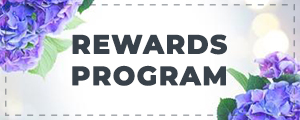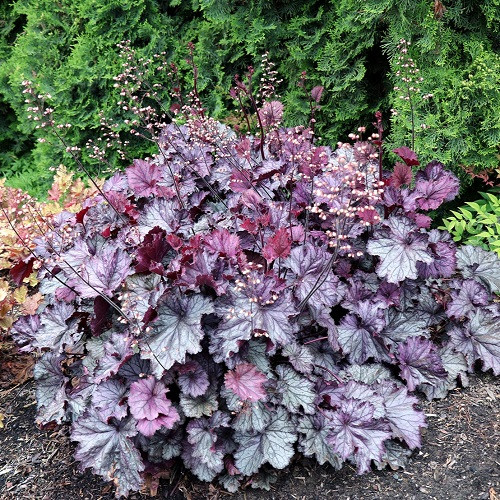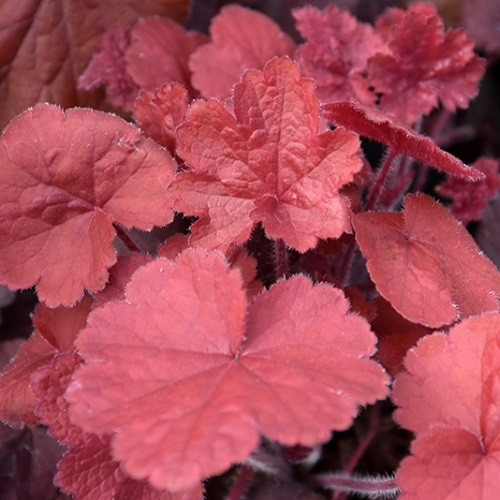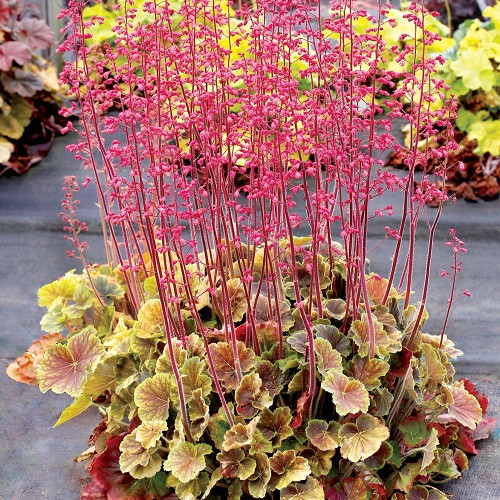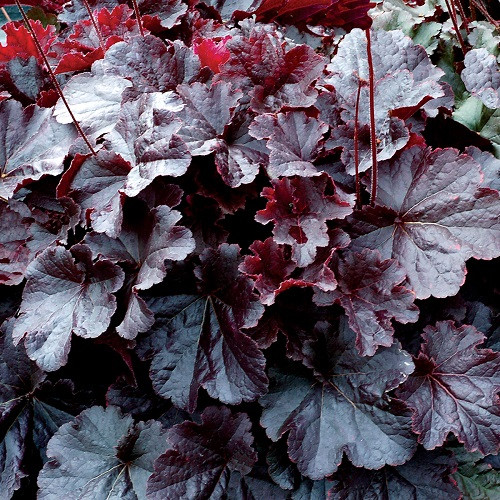| Heuchera 'TNHEUNEP' | USDA Zone: 3-9 |
Northern Exposure™ Purple Coral Bells is primarily valued in the garden for its distinctive form, with the flower stalks towering over the foliage. It features dainty spikes of pink bell-shaped flowers rising above the foliage from mid spring to late summer. Its attractive crinkled round leaves emerge burgundy in spring, turning deep purple in colour with distinctive black veins and tinges of silver the rest of the year.
This showy garden plant produces round, deep purple leaves with a silvery overlay, on a dense, medium size mound; great rust resistance and longevity; excellent for defining border edges with bright, contrasting color.
Northern Exposure™ Purple Coral Bells is recommended for the following landscape applications;
- Mass Planting
- Rock/Alpine Gardens
- Border Edging
- General Garden Use
- Groundcover
- Container Planting
Northern Exposure™ Series
Bloom Time: Spring, Summer
Deer and Rabbit resistant.
Attracts Bees, Butterflies, and Hummingbirds.
Common Name: Coral Bells, Alumroot
|
Key Feature
|
Light Needs | Landscape Uses |
 |
 |
|
|
|
|
| More About Northern Exposure Purple Coral Bells |
| Height: 12-24 inches |
Spread: 16-18 inches |
Flower Colour: White / Pink Shades |
|
Northern Exposure™ Purple Coral Bells performs well in both full sun and full shade. However, you may want to keep it away from hot, dry locations that receive direct afternoon sun or which get reflected sunlight, such as against the south side of a white wall. It prefers to grow in average to moist conditions, and shouldn't be allowed to dry out. It is not particular as to soil type or pH. It is somewhat tolerant of urban pollution. Consider covering it with a thick layer of mulch in winter to protect it in exposed location. Northern Exposure™ Purple Coral Bells is a fine choice for the garden, but it is also a good selection for planting in outdoor pots and containers. With its upright habit of growth, it is best suited for use as a 'thriller' in the 'spiller-thriller-filler' container combination; plant it near the center of the pot, surrounded by smaller plants and those that spill over the edges. Note that when grown in a container, it may not perform exactly as indicated on the tag - this is to be expected. Also note that when growing plants in outdoor containers and baskets, they may require more frequent waterings than they would in the yard or garden. Be aware that in our climate, most plants cannot be expected to survive the winter if left in containers outdoors, and this plant is no exception. NOTE: Some flowers and plants may be harmful or poisonous to people or pets if touched or ingested. If you require more information before placing an order, please let us know in advance. |


